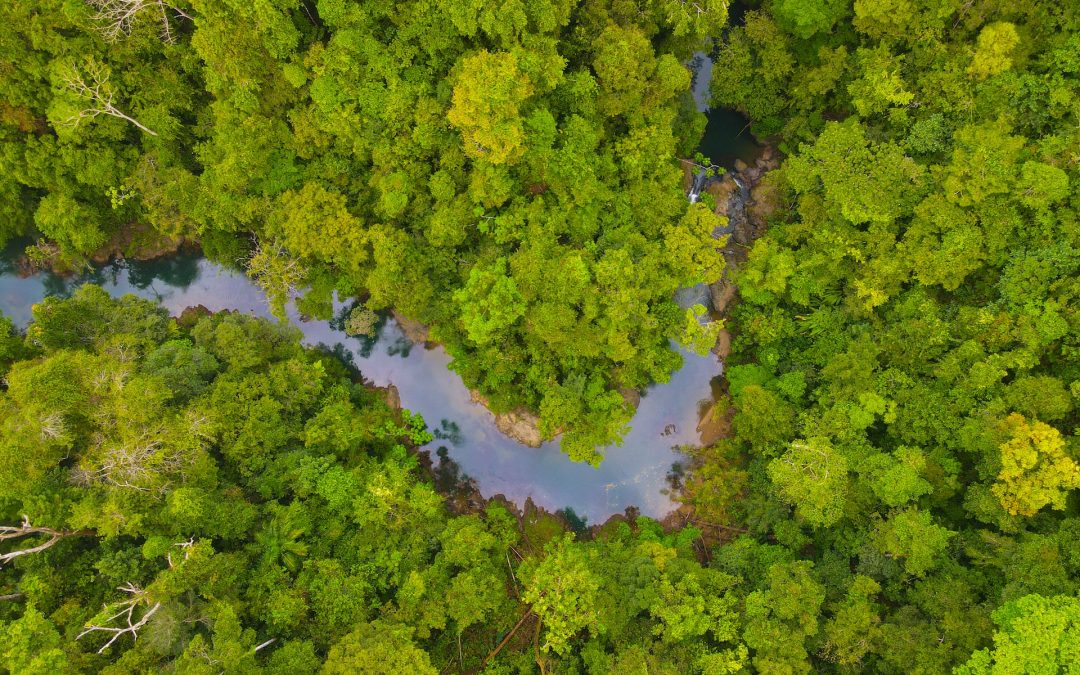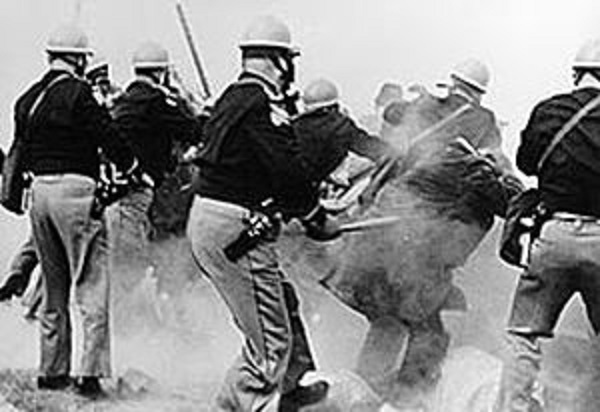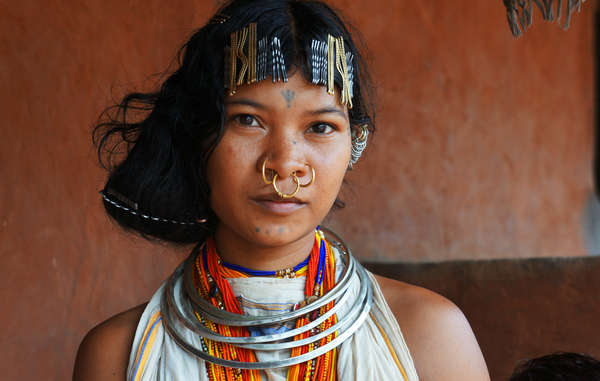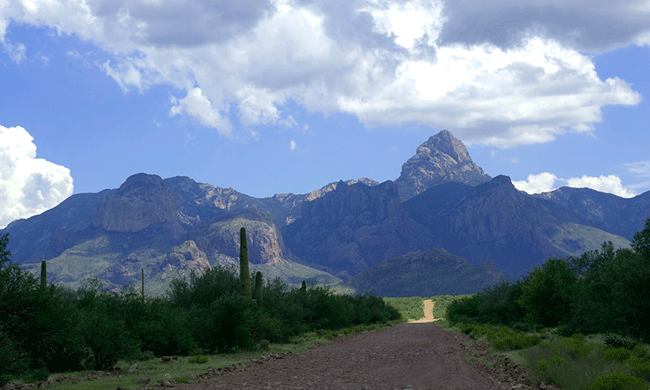
by Deep Green Resistance News Service | Jan 9, 2017 | Indigenous Autonomy, Lobbying
by John McPhaul / Cultural Survival
On November 1, 2016, the Constitutional Chamber of Costa Rica’s Supreme Court provided some good news to a Terraba (Teribe) Indigenous territory when it stopped the state-run Costa Rica Electricity Institute (ICE by its Spanish acronym) from going forward with the Diquis hydroelectric project for failing to consult Indigenous communities who would see part of their lands flooded.
The permit, issued in 2007 under former President Oscar Arias, had declared the dam to be located at the mouth of the General River Valley in the southern Pacific and part of the country of “national interest.”
The court ruling did not question the “national interest” part of the permit, but said ICE had failed to comply with a previous high court order to adequately consult the Indigenous communities. The project has been stalled since 2011 over the Indigenous consultation issue.
The 650 megawatt hydroelectric project was to be the largest such project in Central America. The project’s reservoir would occupy 7363 hectares of land, 830 hectares of which are Indigenous territories, and displace over 1547 people.
The project would also flood 10 percent of the Terraba (also known as Teribe) China Kichá Indigenous territory (104 hectares) and 8 percent of another Terraba communities of Curré and Boruca (726 hectares). Officials estimate that 200 sacred Indigenous sites would be destroyed by the reservoir.
Some see the development as very positive. The $2.5 billion project would provide employment in the region to 3,500 people. The Diquis project would increase that renewable energy capacity and also allow Costa Rica to sell energy to neighboring Central American countries. Costa Ricans are proud of their electrical energy system which provides energy mostly from renewable resources. In 2016, the country went most of the year without resorting to using oil-fired thermal generators. But sometimes even renewable energy has high cost, especially when it comes to hydro-electric dams.
The high court ruling referred to Article 8 of the Arias Administration decree which would have allowed ICE to gather materials for the dam, power station, and connected works in locales in the areas of El General, Buenos Aires, Changuena and Cabagra, despite the fact that Indigenous people live in the areas.
According to the Constitutional Chamber’s press office, the annulled article was challenged previously in September of 2011, when the court determined that the decree was constitutional just as long as the Indigenous communities were consulted within a period of six months from the notification of the ruling.
However, early the next year, the court ruled that the six months established by the Court had passed and the consultation had not been made. “The Constitutional Chamber has demonstrated that, in fact, in the space of time established in the 2011-12975 ruling, the referred to consultation was not made nor did any party come to this Chamber request an extension of the time limit granted. Therefore, since the condition dictated in ruling 2011-12975 have not been met, the Article 8 of the No. 34312-MP-MINAE executive decree is unconstitutional because the consultation failed to occur,” said the press office.
The Terraba say they are not interested in the offers made so far to relocate their communities to other lands and provide them with well-paid jobs. “We don’t believe in the promises of employment for Indigenous Peoples, as up until today it had been demonstrated that all the qualified and best paid personnel have been brought from outside, Indigenous workers are used only to break rocks,” said community leader Jehry Rivera.
For Indigenous people, ICE offers are only opportunism. Indigenous Peoples want better lands and compensation in order to agree for the project to go forward.
The Court said that the consultation of Indigenous communities under Costa Rican law was necessary since the project is located in areas declared as an Indigenous reserve, “In fact, Costa Rica could be in violation of not complying with international conventions in relation to the autonomy of Indigenous Peoples over their territory. Costa Rica is a signatory of the International Labor Organization’s Convention on Indigenous and Tribal People.”
Indigenous Peoples are not the only ones opposed to the project. Environmentalists say that the dam’s reservoir would dry up the intensely green Térraba River Valley and would destroy irreplaceable habitats such as the Ramsar wetland and the river delta that drains into the Pacific. The wetlands and delta are the nesting grounds for many species including the endangered hump-back whale.
–John McPhaul is a Costa Rican-American freelance writer based in San Juan, Puerto Rico. During his many years in Costa Rica, the land of his birth, he wrote for the Miami Herald, Time Magazine and Costa Rica’s The Tico Times among other publications.
Photo by Florian Delée on Unsplash
by Deep Green Resistance News Service | Dec 25, 2016 | Colonialism & Conquest, Mining & Drilling
Featured image: Domingo Ankuash of the Shuar speaking at the Inter-American Commission in Washington DC. By Daniel Cima.
by Cultural Survival
Cultural Survival condemns the action of the Ecuadorian government in the raiding of the Shuar federation, FICSH (Federación Interprovincial de Centros Shuar), and the arbitrary detention of its president, Agustin Wachapa, on December 20, 2016.
The Shuar have been organizing to defend their ancestral lands from the development of a Chinese copper mine. Under the San Carlos Panantza copper project, the Ecuadorian government conceded 41 thousand hectares of land to the Chinese mining company ECSA for a period of 25 years. The project, currently in the exploration phase, is estimated to deliver around $1200 million USD in annual profits.
To make way for the mine, the Shuar community of Nankints was evicted in August 2016 without their Free, Prior and Informed Consent, in violation of Convention 169 of the International Labor Organization, the Ecuadorian constitution, and the UN Declaration on the Rights of Indigenous Peoples.
Since the evictions, violent clashes have broken out between individuals seeking to regain control of their homes and ancestral lands and military and police who are stationed to guard the property and employees of the mine. Now, the government has declared a “state of exception” in the province of Morona Santiago, and militarized the community of Nankints with hundreds of military personnel, tanks, and trucks, and helicopters. The state of exception strips Indigenous residents of the rights to freedom of movement, freedom of association, freedom of assembly and inviolability of the home, among others.
Cultural Survival joins COICA (Coordinadora de la Organizaciones Indígenas de la Cuenca Amazónica) in making the following demands:
- We urge for intervention by neutral third parties in order to find a dialogue that does not deepen and aggravate the existing conflict.
- We call for an immediate demilitarization of the community of Nankints, insuring the continued respect for human rights and collective rights of the Indigenous Shuar people, guaranteed by the Ecuadorian constitution in article 57. 20.
- We demand the immediate release of Shuar leader and human rights and environmental defender Agustin Wachapa, and for him to be treated in accordance with the UN Declaration on Human Rights Defenders.
- We condemn the Ministry of the Environment in Ecuador for their December 20th call to close the grassroots environmental organization Accion Ecologica.
Take Action: Defend Environmental Defenders! Stand with Acción Ecológica and the Shuar!
by Deep Green Resistance News Service | Dec 16, 2016 | Lobbying, Repression at Home
by Noah Weber
On Sunday, March 7, 1965, roughly 600 African Americans and their allies gathered and marched towards Montgomery, Alabama in order to take a stand and draw attention to the fact that 99% of Selma, Alabama’s registered voters were white, and that the African American community was being denied their legal right to vote. The unarmed men and women who marched across the Edmund Pettus Bridge were met by a heavily armed police force and were tear gassed and beaten horrifically. In the end, 17 marchers were hospitalized, and another 50 were treated for injuries caused by the police.
On Sunday, November 20, 2016, more than 400 Native Americans and their allies marched on the Backwater Bridge outside of Cannon Ball, North Dakota. The Water Protectors had been demonstrating peacefully for months in order to preserve sacred burial grounds and protect their only source of clean drinking water from the oil-bearing Dakota Access Pipeline. However, this unarmed march was meant to clear vehicles that had been set up by DAPL to block the Backwater Bridge. They were attempting to clear the road so that emergency medical vehicles could have faster access to the residents and campers at the Standing Rock Sioux Reservation. After being trapped on the bridge by heavily armed police, the marchers were hosed with water cannons in 23°F temperatures, and shot with rubber bullets, tear gas, pepper spray, and concussion grenades for more than 7 hours. 26 people were hospitalized, and more than 300 were treated for injuries caused by the police forces.
It is highly likely that neither group of marchers knew the full extent of the violence that they were about to experience as they marched on these bridges for the first time. However, they certainly knew what was in store for them for any subsequent actions. After the first march on Montgomery, the nation was horrified by the images broadcast by media sources, and on March 9, more than 2500 people showed up for the second march on Montgomery. Due to a pending decision, and a restraining order issued by Federal District Court Judge Frank Minis Johnson, the marchers turned around on the Pettus Bridge.
Ultimately, on March 17, Judge Johnson ruled that the civil rights activists’ right to march could not be abridged by the state of Alabama, writing “The law is clear that the right to petition one’s government for the redress of grievances may be exercised in large groups…by marching, even along public highways.” Meanwhile, on March 13th, President Lyndon Johnson met with Alabama Governor George Wallace in an attempt to prevent further violence and harassment from being directed at the civil rights activists. While unsuccessful with Wallace, President Johnson introduced a bill two days later to Congress. That bill became the Voting Rights Act. While it took time for the bill to pass, President Johnson deployed 2000 soldiers of the U.S. Army, 1900 Alabama National Guard troops under federal command, and unknown numbers of FBI and Federal Marshals to protect the demonstrators as they successfully continued their march on March 21.
When I showed up on November 24 to bring supplies and provide medical support at the Oceti Sakowin Camp, there were an estimated 3500 people at camp. When I left at the end of the week, there were roughly 10,000. Dozens of countries, and hundreds of tribes from around the world are expressing outrage and concern over the violence and harassment directed towards the Water Protectors at Standing Rock. These communities are also outraged that the pipeline was originally supposed to pass north of Bismarck, ND, but was rejected as being too dangerous to pass near that overwhelmingly white community’s water source, and instead was relocated to pass through traditional Lakota lands and under their Missouri River water source without any conversation regarding indigenous concerns and opposition to the pipeline.
Governor Jack Dalrymple of North Dakota is escalating his rhetoric towards the safety of the people camped at Standing Rock. He has threatened anyone bringing food and clothing donations to the camps with $1000 fines. This week, he threatened to oust the Water Protectors from their camps in the name of safety, due to winter conditions. However, the Water Protectors are not going to leave, and making someone homeless in winter is unconscionable. Using water cannons on peaceful demonstrators in sub-freezing temperatures shows that safety is not Dalrymple’s top priority. Getting people to vacate the land is his priority.
The Water Protectors are going to continue to march, pray, and peacefully demonstrate, regardless of the violent reactions from DAPL security and police forces. They are doing everything that they can to stand up for their rights in a peaceful manner. They are waiting for action from President Obama. It is time for a sit-down between President Obama and Gov. Dalrymple. It is also time for an immediate and decisive response from the Obama administration to ensure the safety of peacefully assembled citizens and their right to clean water. This means troops standing with the Water Protectors, not opposed to them. President Johnson was not perfect, but he has been judged by this nation, and the world, to have been on the correct side of history on civil rights in the wake of Bloody Sunday. Due to the shared history of abuse and denied rights, despite laws and treaties on their side, it is difficult to see why President Obama praises one group’s actions, but has yet to do anything of substance for the other.

Bloody Sunday
When will troops protect the Water Protectors? So far the only troops acting in such a capacity are the veterans recruited by Wes Clark Jr. My thanks go out to Mr. Clark and his veterans. However, anything short of deploying troops to protect the peacefully assembled demonstrators, in conjunction with pushing a bill through Congress to extend the rights of indigenous communities over the governance of their own land, would be a shameful act by the Obama administration. This is your Pettus Bridge, Mr. President. On which side of this historic bridge do you stand?
Taking the least effective route to enact change is not praiseworthy. A teacher would award a D for such effort.
While the ruling by the Army Corps of Engineers sounds nice, demonstrators are still fighting for Lakota rights on land that is considered to be federally-owned, but was granted to the Lakota “in perpetuity” by the government. The Lakota never relinquished their right to this land. The government took it.
There are still Federal Police and Army Corps vehicles on Lakota land. They are still on the north side of Cantapeta Creek…with the DAPL security forces. I will believe something has changed when Federal forces are standing shoulder-to-shoulder WITH the Standing Rock Water Protectors, indigenous rights have been extended by law, and the pipeline is re-routed or terminated. Until this happens, nothing has changed.
Noah Weber is a nurse and a farmer from Montana. He volunteered as a medic at the Oceti Sakowin Camp at Standing Rock, though most of his time went to ensuring everyone in the medic, healer, midwifery, and warming tents had wood, warmth, and functional stoves.
Featured image: Standing Rock, by Rob Wilson

by Deep Green Resistance News Service | Nov 25, 2016 | Indigenous Autonomy, Mining & Drilling
by Survival International
A mining company in India has renewed its efforts to start mining on the sacred hills of the Dongria Kondh people, despite previous defeat in the Supreme Court, and determined opposition by the tribe.
The Dongria Kondh consider the Niyamgiri Hills to be sacred and have been dependent on and managed them for millennia. Despite this the Odisha Mining Corporation (OMC), which previously partnered with British-owned Vedanta Resources, is once again attempting to open a bauxite mine there.
In February this year, OMC sought permission from India’s Supreme court to re-run a ground breaking referendum, in which the Dongria tribe had resolutely rejected large-scale mining in their hills. This petition was thrown out by the Supreme Court in May.
India’s Business Standard reported recently that OMC is gearing up for yet another attempt to mine, after getting the go-ahead from the government of Odisha state.
Dongria leader Lodu Sikaka has said: ”We would rather sacrifice our lives for Mother Earth, we shall not let her down. Let the government, businessmen, and the company argue and repress us as much as they can, we are not going to leave Niyamgiri, our Mother Earth. Niyamgiri, Niyam Raja, is our god, our Mother Earth. We are her children.”
For tribal peoples like the Dongria, land is life. It fulfills all their material and spiritual needs. Land provides food, housing and clothing. It’s also the foundation of tribal peoples’ identity and sense of belonging.
The theft of tribal land destroys self-sufficient peoples and their diverse ways of life. It causes disease, destitution and suicide.
The Dongria’s rejection of mining at 12 village meetings in 2013, led the Indian government to refuse the necessary clearances to mining giant Vedanta Resources. This was viewed as a heroic David and Goliath victory over London-listed Vedanta and the state-run OMC.
Only the Dongria’s courageous defence of their sacred hills has stopped a mine which would have devastated the area: more evidence that tribal peoples are better at looking after their environment than anyone else. They are the best conservationists and guardians of the natural world. Protecting their territory is an effective barrier against deforestation and other forms of environmental degradation.

by Deep Green Resistance News Service | Nov 24, 2016 | Indigenous Autonomy
by Tristan Ahtone / Yes Magazine
President-elect Donald Trump says that he will build a wall along the U.S.-Mexico border. It will stop undocumented immigrants from entering the country. It will stop drugs from entering the country. It will be 50 feet tall. It will be nearly a thousand miles long. And it will cut the traditional lands of the Tohono O’odham Nation of Arizona in half.
The Tohono O’odham reservation is one of the largest in the nation, and occupies area that includes 76 miles of the U.S.-Mexico border. However, the tribe’s traditional lands extend deep into Mexico, and tribal members live on both sides of the border: With tribal identification, they cross regularly to visit family, receive medical services, and participate in ceremonial or religious services.
The prospect of slicing their homelands in two? Not welcome.
“Over my dead body will a wall be built,” says Verlon Jose, vice chairperson of the Tohono O’odham Nation. “If he decides to build a wall, he’s going to need to come talk to us, unless he wants to see another Standing Rock.”
In other words, to build the wall, Mr. Trump will have to fight for every single mile of Tohono O’odham land—legally, and possibly even physically.
And they’re not the only tribal nation that would be impacted by the wall.
Robert Holden, deputy director of the National Congress of American Indians, points to the Ysleta Del Sur in Texas and tribes in California, such as the Kumeyaay, who have relatives in Mexico. “There’s significant tribal sovereignty at stake here,” Holden says.
Currently, a vehicle barrier on Tohono O’odham land separates Mexico from the United States. It’s stopped cars and trucks from crashing across the border but hasn’t significantly curbed illegal activities in the area.
The nation sits inside what the Department of Homeland Security calls the Tucson Sector—262 miles of border stretching from New Mexico almost entirely across Arizona, and one of the busiest areas for illegal border activity in the U.S. In 2015, more than 60,000 pounds of marijuana, cocaine, methamphetamine, and heroin were seized by Tucson Border Patrol. According to officials, that same year, Border Patrol handled more than 2,100 drug cases, and some 680 smuggling cases were prosecuted out of the Tucson Sector.
But despite the statistics, the Tohono O’odham have resisted more intrusive physical barriers within their territory.
“The people of the Tohono O’odham Nation have always been against a wall,” says Jose. In the 1990s, he adds, federal agencies discussed a wall or some other additional security barrier, but the tribe resisted, and the plan was dropped.
In order to deal with criminal activities in the area, the nation has opted to work with the Department of Homeland Security, U.S. Immigration and Customs Enforcement, as well as Border Patrol. For instance, the Shadow Wolves—a Tohono O’odham tactical patrol unit—have worked with DHS since the early 2000s and are responsible for seizing thousands of pounds of illegal drugs and for hundreds of arrests on the reservation. And tribal law enforcement has worked closely with federal authorities as well as tribal communities to maintain a semblance of safety and order.
This doesn’t mean things are peachy down on the Tohono O’odham reservation, though: Tribal members say they are routinely harassed by Border Patrol; cultural and religious items are frequently confiscated; and detentions and deportations of tribal citizens are not uncommon. In 2014, two tribal members were hospitalized after being shot by a Border Patrol agent. The situation has often been compared to a Berlin Wall-like scenario, but the tribe has fought for and maintained the ability to enjoy its traditional homelands—at least more than if a wall were running through the middle of it.
“Let me come into your home and build a wall directly in the middle of your house and tell me what impacts that would have on you?” says Jose. “This land is our grocery store; this land is our medical facility, where we get our medicinal remedies from; this land is our college and university. Our sacred sites are in Mexico; our ceremonies are in what is now Mexico. The border is an imaginary line to us.”
Border Patrol officials declined to comment on the proposed wall or how the agency has worked with the Tohono O’odham in the past.
“Beyond the practical difficulties of building and maintaining such a wall, it really would undermine a lot of cooperative agreements that law enforcement rely on to police that border,” says Melissa Tatum, a law professor at the University of Arizona. “If they’re not cooperating with the Tohono O’odham that help to secure the border, it creates incentives to have more resistance.”
In the short term, when it comes to securing the border, there are no easy answers or solutions. But when it comes to working with tribal nations on the issue, in the eyes of the Tohono O’odham, Trump’s proposed wall represents either gross ignorance or blatant disregard for tribal sovereignty. And if construction begins, it could signal the winding back of clocks on U.S.-tribal relations on the border.
“I can’t even imagine how far it would set us back,” says Tatum. “More than a hundred years.”
Tristan Ahtone wrote this article for YES! Magazine. Tristan is a journalist and member of the Kiowa tribe of Oklahoma. His work has appeared on and in PBS NewsHour, National Native News, Frontline, Wyoming Public Radio, Vice, Fronteras Desk, NPR, and Al Jazeera America.
This article has been re-published Deep Green Resistance News Service under a Creative Commons License.




